Disclosure: This article contains affiliate links. We may earn a commission from purchases at no extra cost to you, which helps our travel content.
As the first golden rays of dawn illuminate the mist-shrouded valleys of Bumthang, I find myself standing barefoot on dew-kissed grass, watching monks prepare for the day's sacred festivities. There's something about this place—Bhutan's spiritual heartland—that resonates with the energy seeker in me. Perhaps it's the whispered mantras carried by mountain winds, or the way ancient traditions continue to flourish undisturbed by time's relentless march. Whatever it is, Bumthang's sacred festivals offer something truly transcendent for those willing to venture beyond the ordinary tourist path.
The Four Sacred Valleys: Understanding Bumthang's Soul
Bumthang isn't simply a destination—it's four mystical valleys (Ura, Chumey, Tang, and Choekhor) cradling Bhutan's spiritual essence. Each valley possesses its own distinctive energy signature that I've come to recognize during my three visits over the years.
Choekhor Valley, with its concentration of ancient temples, serves as the primary stage for many of Bumthang's most significant festivals. Here, the 7th-century Jambay Lhakhang temple hosts the mesmerizing Jambay Lhakhang Drup festival, where the famous 'fire ceremony' (Mewang) sees locals running through a blazing gate constructed in the temple courtyard—a powerful purification ritual I witnessed with both trepidation and awe.
During my stay, I found that the meditation cushion I brought along proved invaluable for extended temple visits and dawn meditation sessions overlooking the valleys. The elevation in Bumthang (2,600-4,000m) means mornings can be quite cool, so I was grateful for my cashmere travel wrap that provided both warmth and appropriate modesty when visiting sacred sites.

💡 Pro Tips
- Visit Kurjey Lhakhang complex first to understand Guru Rinpoche's significance in Bhutanese Buddhism
- Arrange for a local spiritual guide through your hotel—they provide context that transforms your festival experience
- Practice sitting cross-legged before your trip, as many ceremonies involve hours of ground seating
Jambay Lhakhang Drup: Dancing Between Worlds
Of all Bumthang's festivals, the Jambay Lhakhang Drup holds particular significance. Occurring in late October or early November (falling on the 15th day of the ninth lunar month), this five-day celebration commemorates the temple's founding by the Tibetan king Songtsän Gampo in the 7th century.
My most profound experience came during the midnight Tercham (Naked Dance). As flames illuminated the courtyard and masked dancers moved with otherworldly precision, I felt the veil between physical and spiritual realms grow exceptionally thin. The dance is believed to bless spectators with fertility and cleanse them of sins—a beautiful embodiment of the Bhutanese approach to spirituality that embraces both the sacred and sensual aspects of existence.
During festival nights, temperatures drop significantly. My thermal flask became my constant companion, filled with traditional butter tea that local monks taught me to appreciate. The rich, savory warmth provided sustenance during the all-night ceremonies. For capturing these low-light ceremonies without disturbing their sanctity, I relied on my phone paired with a phone stabilizer that allowed for smooth, respectful documentation of permissible moments.
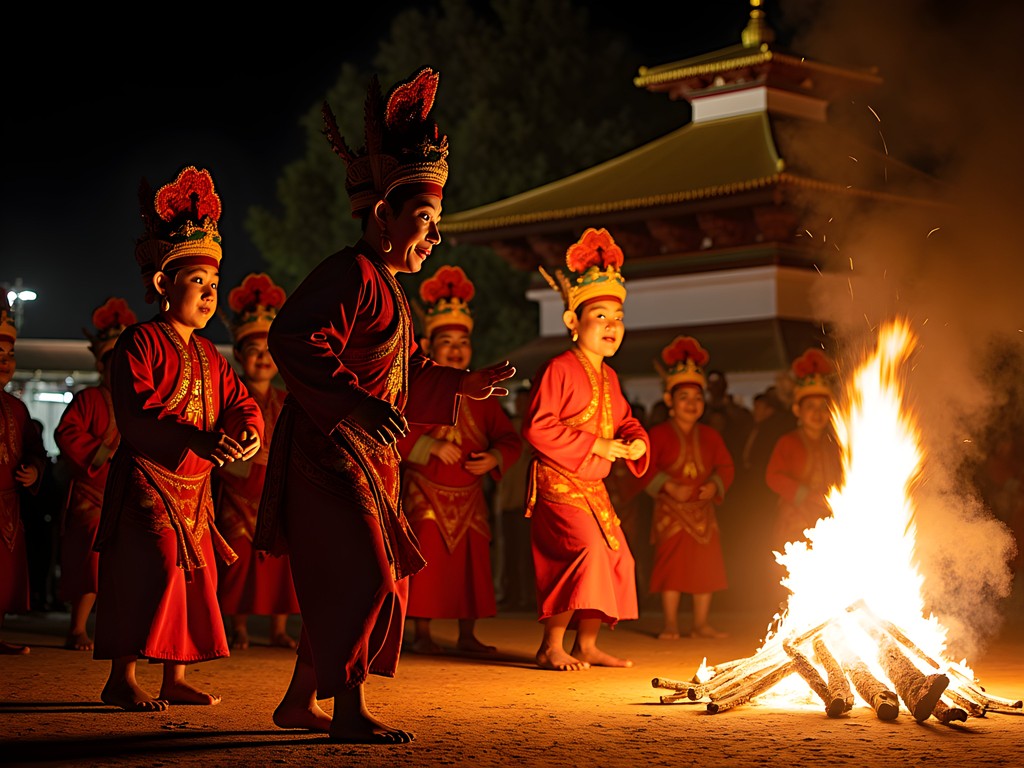

💡 Pro Tips
- Secure accommodation at least 6 months in advance as the valley fills quickly during festival dates
- Bring a small flashlight with a red light setting for navigating temple grounds at night without disrupting ceremonies
- Learn basic Dzongkha greetings—the monks' faces light up when foreigners make this effort
Thangbi Mani: The Valley's Hidden Gem Festival
While most travelers focus exclusively on the more famous Jambay Lhakhang Drup, I found unexpected magic in the lesser-known Thangbi Mani festival. Held in the small but significant Thangbi Lhakhang monastery in late September/early October, this three-day celebration offers a more intimate glimpse into Bhutanese spiritual practices.
What struck me most was the seamless blend of Buddhist and pre-Buddhist elements—a beautiful reflection of Bhutan's syncretic spiritual approach that reminds me of similar practices in my grandmother's healing tradition. The Shaw (Stag) Dance particularly resonated with me, as dancers embodied the powerful protective energy of the natural world—something I've felt deeply in Bhutan's pristine forests.
During one particularly moving ceremony, an elderly woman noticed my interest and silently guided me to a better viewing position, later explaining the symbolism through a mixture of broken English and expressive gestures. These human connections transcend language barriers and form the true heart of festival experiences.
With ceremonies often lasting from dawn until well past midnight, I was grateful for my meditation stool, which provided ergonomic support during long sitting periods while being lightweight enough to carry in my daypack.

💡 Pro Tips
- Visit Thangbi Lhakhang a day before the festival to make offerings and receive blessings when monks aren't busy with preparations
- Bring small denomination Bhutanese ngultrum for offerings—changing money at the festival is nearly impossible
- Respect photography restrictions—some sacred dances cannot be photographed, and this is strictly enforced
Luxury Accommodations: Sacred Spaces for Modern Pilgrims
Bumthang's increasing prominence on the spiritual tourism circuit has fortunately not compromised its authenticity, but it has inspired the creation of mindfully luxurious accommodations that honor local traditions while providing comfort for discerning travelers.
My personal sanctuary during festivals is the Amankora Bumthang, nestled within a fruit orchard adjacent to Wangdicholing Palace. The property exemplifies wabi-sabi—finding beauty in imperfection—through its minimalist design that highlights natural materials and creates harmony with the surrounding landscape. Their festival packages include private audiences with senior monks and reserved seating at ceremonies—invaluable for deeper understanding and optimal viewing.
For those seeking even deeper immersion, the Six Senses Bumthang offers forest villas where floor-to-ceiling windows dissolve the boundary between indoor luxury and Bhutan's pristine nature. Their spa incorporates traditional Bhutanese hot stone therapies that proved remarkably effective in soothing my body after long days of festival participation.
While both properties provide excellent amenities, I still pack my silk sleep liner for added comfort and cleanliness, especially when my itinerary includes overnight stays at monasteries between festival days. To maintain my energy through intensive festival schedules, I rely on adaptogenic supplements, which support stamina and immunity at high altitudes without interfering with the spiritual clarity I seek during these pilgrimages.
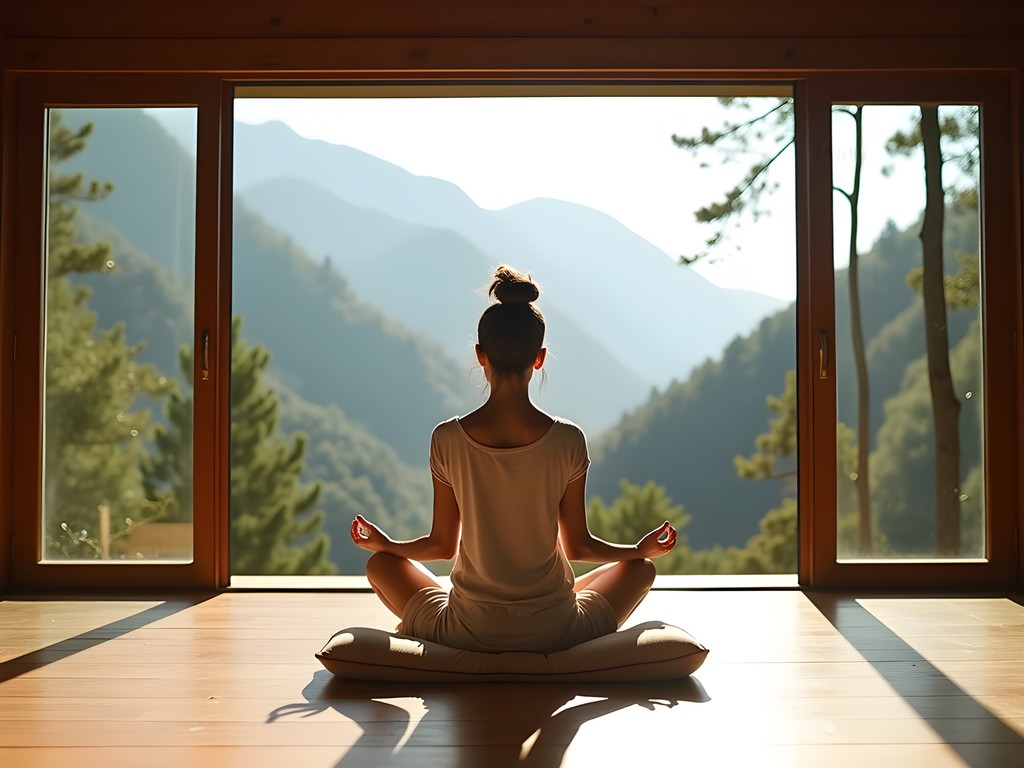
💡 Pro Tips
- Request rooms facing east at luxury properties to practice sunrise meditation with valley views
- Book spa treatments for late afternoon when there's typically a festival break before evening ceremonies
- Arrange for hotel staff to prepare traditional Bhutanese breakfast picnics for early morning festival viewing
Preparing Body and Spirit: The Mindful Approach to Festival Participation
Experiencing Bumthang's festivals at their deepest level requires preparation beyond standard travel planning. Drawing from both my grandmother's energy practices and Bhutanese traditions, I've developed a framework for meaningful festival immersion.
Begin physical preparation at least two weeks before departure with gentle altitude acclimation exercises. Bumthang's elevation (2,600-4,000m) can affect even seasoned travelers. I practice breathing exercises using the breathing trainer to strengthen respiratory muscles, which helps tremendously when adjusting to thinner mountain air.
Spiritually, I create space for the experience by simplifying my life before departure—reducing digital consumption, meditating daily, and setting clear intentions for my journey. Upon arrival in Bhutan, I observe a day of relative silence before festivals begin, allowing my energy to harmonize with the land.
The concept of ikigai—finding purpose at the intersection of passion, mission, vocation, and profession—guides my festival documentation. Rather than experiencing events through a camera lens, I remain fully present, taking notes in my journal during quiet moments and creating sketches that capture energy rather than just physical forms. This approach honors both the experience and my responsibility as a storyteller.
Bumthang's festivals aren't merely performances for tourists but living spiritual practices. Approaching them with reverence, curiosity, and openness creates space for the kind of transformation that continues to unfold long after returning home—the true measure of meaningful travel.
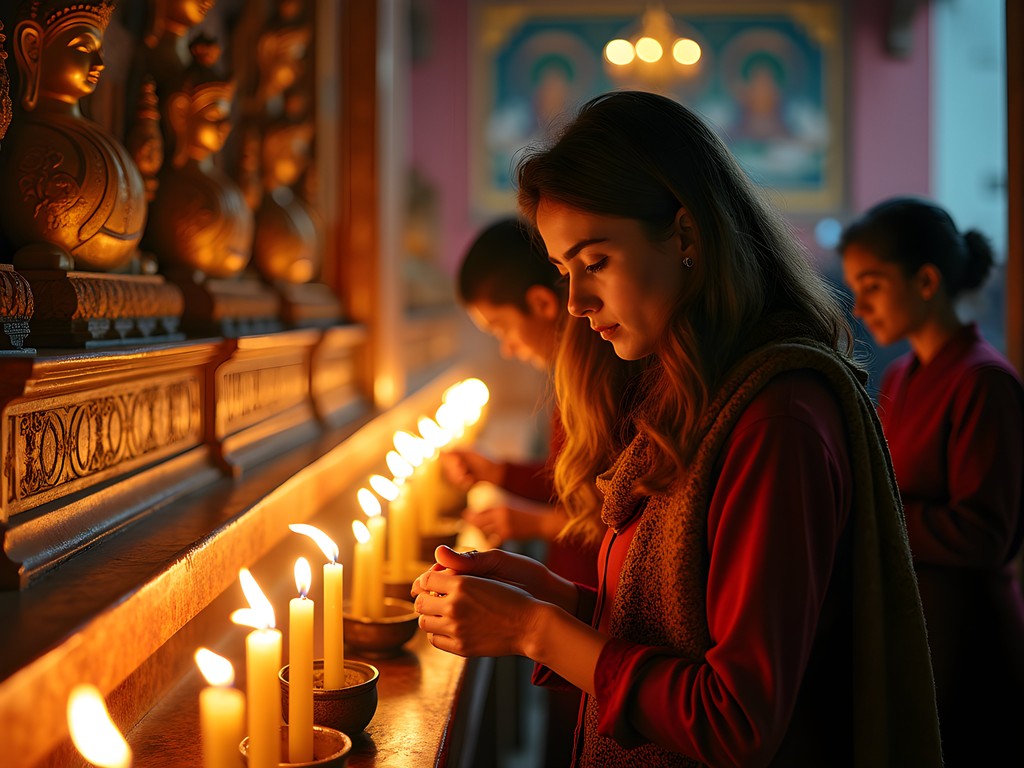
💡 Pro Tips
- Start taking Rhodiola supplements two weeks before travel to help with altitude adjustment
- Practice sitting cross-legged for increasing periods before your trip—festival viewing often requires hours of ground sitting
- Learn basic meditation techniques to center yourself when overwhelmed by festival sensory input
Final Thoughts
As I sit in the pre-dawn darkness on my final morning in Bumthang, watching the first hints of light transform the valley from shadow to substance, I reflect on the extraordinary privilege of witnessing these sacred traditions. The festivals of Bumthang aren't simply cultural performances—they're living bridges between ancient wisdom and our contemporary search for meaning.
What I've come to understand through multiple visits is that these festivals operate on multiple levels simultaneously: as community celebrations, as profound spiritual practices, and as carefully preserved cultural treasures. The true magic happens when we approach them not as spectators but as respectful participants in something far greater than ourselves.
If you feel called to experience Bumthang's sacred festivals, come with an open heart and the patience to let understanding unfold gradually. Allow yourself to be transformed by what you witness. In a world increasingly defined by speed and surface-level experiences, Bhutan's spiritual heart offers something infinitely more valuable—the opportunity to step outside time and reconnect with the eternal rhythms that have sustained human spirituality across centuries.
Until our paths cross in the land of the Thunder Dragon, may your journeys be meaningful and your spirit light.
✨ Key Takeaways
- Book accommodations at least 6-9 months in advance for festival seasons
- Prepare physically for altitude and long sitting sessions to fully appreciate ceremonies
- Engage local spiritual guides for deeper understanding of symbolic meanings
- Balance photography with present-moment awareness during ceremonies
- Approach festivals with reverence as spiritual practices, not tourist performances
📋 Practical Information
Best Time to Visit
Late September through early November for major festivals
Budget Estimate
$800-1,200 USD per day (including Bhutan's daily tourist fee, luxury accommodation, private guide, and festival arrangements)
Recommended Duration
12-14 days (allowing for acclimatization and full festival experiences)
Difficulty Level
Advanced
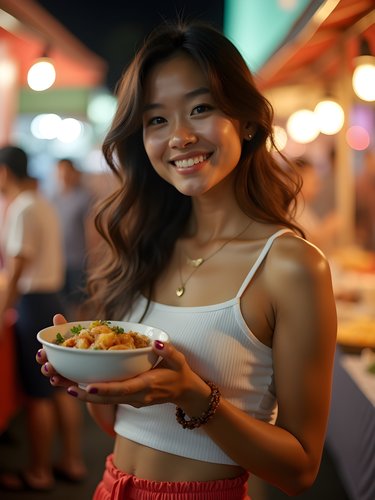

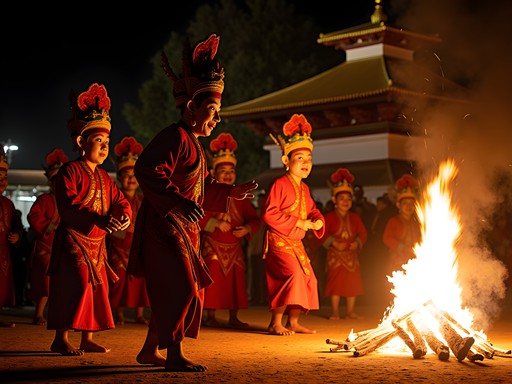
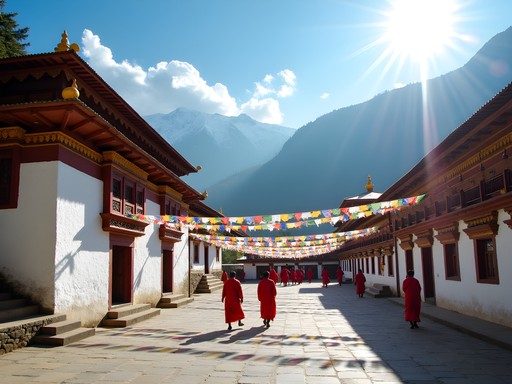




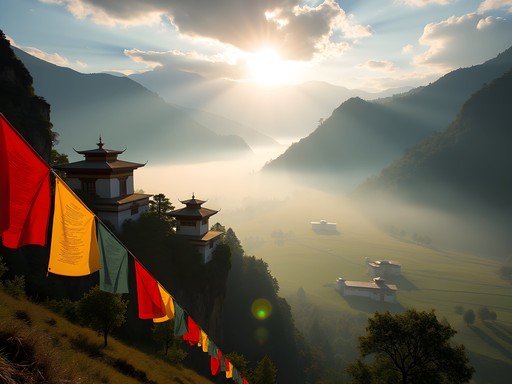
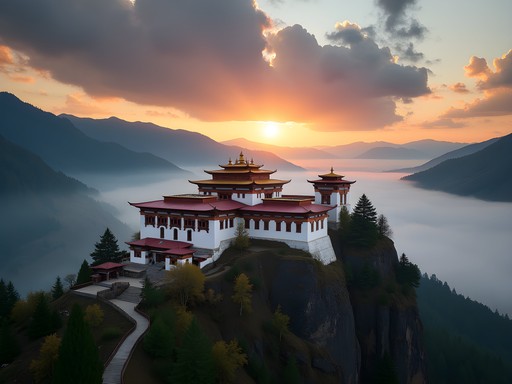






Comments
Nicole Russell
This guide is EXACTLY what I needed! Heading to Bhutan in November and was debating whether to extend my trip to catch the Jambay Lhakhang Drup. After reading this, I'm 100% doing it! I'm curious about appropriate attire for women at these festivals? I want to be respectful but also comfortable for the long festival days. Also packed my travel tripod for those low-light ceremony shots you mentioned. Anyone know if there are specific viewing areas for foreigners or can we mingle freely with locals during the festivals?
Kinsley Andrews
You'll love it, Nicole! For attire, long skirts/pants and tops that cover shoulders are perfect. Locals dress in their finest traditional clothes, but as tourists, neat, modest clothing is fine. There aren't separate viewing areas - you'll sit right alongside locals, which makes it even more special!
sunsetbuddy
Those fire dancers look incredible! Great shots.
vacationhero
Just got back from Bhutan last month and Bumthang was definitely the highlight! We missed the Jambay Lhakhang Drup but caught the smaller Nimalung Tshechu. The mask dances were incredible but I wish I'd read this guide beforehand - we didn't know about the specific meanings behind each dance. Also, the Amankora you mentioned was way above our budget, but we stayed at Mountain Lodge and it was perfect - great views of Jakar Dzong and the staff arranged for us to meet with a local elder who explained the valley's spiritual significance.
sunsetbuddy
Was it hard to get around Bumthang? Planning a trip and wondering if I need to hire a driver.
vacationhero
You'll definitely need a driver. The valleys are spread out and public transport is very limited. Most tour packages include transportation though!
redway
Bumthang looks magical! Adding to my bucket list.
vacationphotographer
Wow! Your photos of the Jambay Lhakhang Drup are absolutely stunning! I was there last year and struggled to capture the fire ceremony with all the movement and low light. What camera settings did you use for those night shots? The colors are so vivid while still keeping the mystical atmosphere. Did you get permission to photograph the masked dances? I found some monks were protective about certain ceremonies.
Kinsley Andrews
Thanks! For the fire ceremony I used a fast prime lens (f/1.8) and kept ISO around 3200. And yes, always ask permission before photographing ceremonies - I usually make a small donation to the monastery beforehand which helps establish good rapport with the monks.
vacationphotographer
That's really helpful, thank you! Will try that approach next time. The donation is a thoughtful touch too.
luckytime
How difficult is it to get to Bumthang from Paro? I'm not great with winding mountain roads but really want to see these festivals!
Kinsley Andrews
It's about 10 hours by car from Paro to Bumthang with some winding roads, but the scenery is spectacular! If you're concerned, I'd suggest breaking up the journey with overnight stops in Thimphu and Punakha. There are also domestic flights from Paro to Bumthang's Bathpalathang Airport that take about 30 minutes - worth the splurge if you're worried about motion sickness. I used anti-nausea bands for the drive and they helped tremendously!
luckytime
Thanks! Didn't know about the flights option. Will definitely look into that!
coolmood
Those festival masks are incredible! Love how you captured the spiritual vibe of Bumthang. Adding this to my bucket list right now! 🙏✨
Douglas Bradley
Beautifully written, Kinsley! I attended the Jambay Lhakhang Drup last year and was mesmerized by the midnight naked fire dance. One thing travelers should note is the festival's sacred nature - photography is prohibited during certain ceremonies, and it's important to dress modestly (shoulders and knees covered). The accommodations in Jakar filled up months in advance, so I'd recommend booking early. I stayed at Wangdicholing Resort, which offered perfect views of the morning processions. Also worth mentioning that the altitude in Bumthang (2,600m) can affect some visitors, so arriving a few days early to acclimatize is wise.
luckytime
Did you need a guide for the festivals or can you just show up?
Douglas Bradley
You'll need a guide for all of Bhutan - it's mandatory for foreign visitors. The daily tourist fee includes your guide, driver, and basic accommodations. Your guide will explain all the festival rituals and symbolism, which honestly makes the experience so much richer!
freehero
Amazing post! When's the best time to visit for these festivals? Planning a trip next year but not sure when to book.
Kinsley Andrews
Thanks freehero! Jambay Lhakhang Drup usually falls in October/November and Thangbi Mani is typically late September or early October. The dates shift slightly each year based on the lunar calendar, so I'd recommend checking with a local tour operator about 6 months before your planned visit.
freehero
Perfect, thanks! Definitely aiming for October then.
journeynomad
This looks amazing! I'm planning a trip to Bhutan next year. How far in advance did you need to book accommodations for the festival periods? And did you need any special permits beyond the standard tourist visa to attend the festivals?
Kinsley Andrews
Great question! I booked about 8 months in advance for festival time - the luxury lodges fill up quickly. No special permits needed for the festivals beyond your standard tourist visa and daily fee, but having a guide arrange seating in advance helps tremendously with getting good viewing spots!
Venture X
Premium card with 2X miles, $300 travel credit, Priority Pass